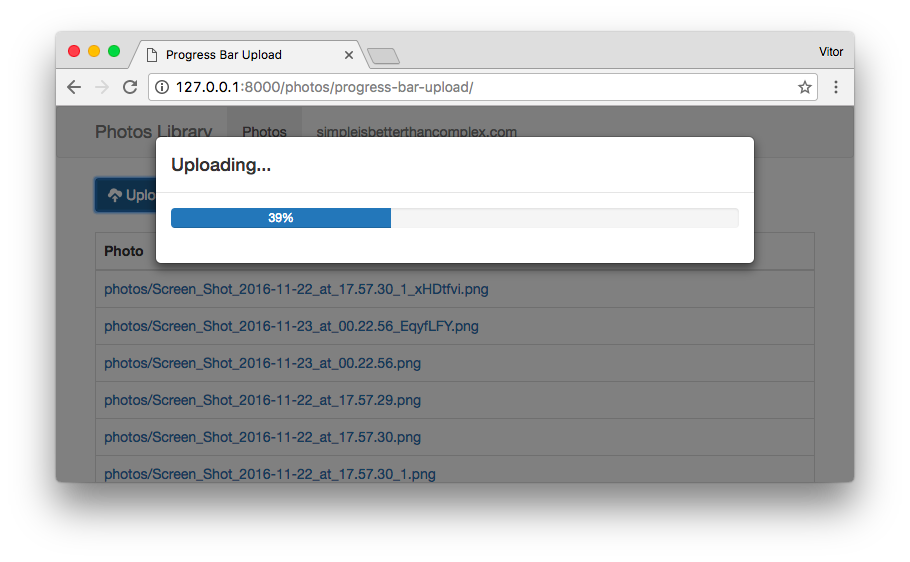
- #Django file upload example how to
- #Django file upload example pdf
- #Django file upload example install
- #Django file upload example update
- #Django file upload example code
#Django file upload example update
Update : Implementation for Django 1.5 at GitHub. Even though there is few changes the following tutorial is also useful for 1.4. Update : The source at GitHub has also implementation for Django 1.4 in addition to 1.3. To download source for the project, visit or clone it: > git clone With that knowledge I implemented a project that makes possible to upload files and show them as list. I spent over 2 hours to dig up all the pieces to understand how this works. The same function is available as a template filter.Phew, Django documentation really does not have good example about this. Returns None if no URL could be generated. Tries to generate a publicly accessible URL for the given file.

By default the content type will be detected via mimetypes.guess_type() using file.name.
#Django file upload example how to
The default is to let the browser decide how to handle the download. Alternatively, you can pass a string to override the file name. If this is True the file object's name attribute will be used as the file name in the download dialog.
#Django file upload example pdf

Otherwise the public download URL is used. template tag returns the second argument which is our fallback URL. Return direct_to_template(request, 'upload/upload.html', Upload_url, upload_data = prepare_upload(request, view_url) View_url = reverse('_handler')įorm = UploadForm(request.POST, request.FILES) This is an example upload view: from filetransfers.api import prepare_upload
#Django file upload example code
The extra POST data is just a dict, so you can pass it to your JavaScript code if needed. Handling uploadsįile uploads are handled with the prepare_upload() function which takes the request and the URL of the upload view and returns a tuple with a generated upload URL and extra POST data for the upload. convert uploaded images via the Image API. Note for App Engine users: When accessing a file object from UploadedModel you can get the file's BlobInfo object via _info. The upload_to parameter for FileField defines the target folder for file uploads (here, we add the date). In the following we'll use this model and form: class UploadModel(models.Model):įile = models.FileField(upload_to='uploads/%Y/%m/%d/%H/%M/%S/')

Otherwise, the Blobstore API is disabled. In order to use the Blobstore on the App Engine production server you have to enable billing. You don't need any special configuration. Note for App Engine users: All nrequired backends are already enabled in the default settings. Then, add "filetransfers" to your INSTALLED_APPS.
#Django file upload example install
You can install the package via setup.py install or by copying or linking the "filetransfers" folder to your project (App Engine developers have to use the copy/link method).


 0 kommentar(er)
0 kommentar(er)
